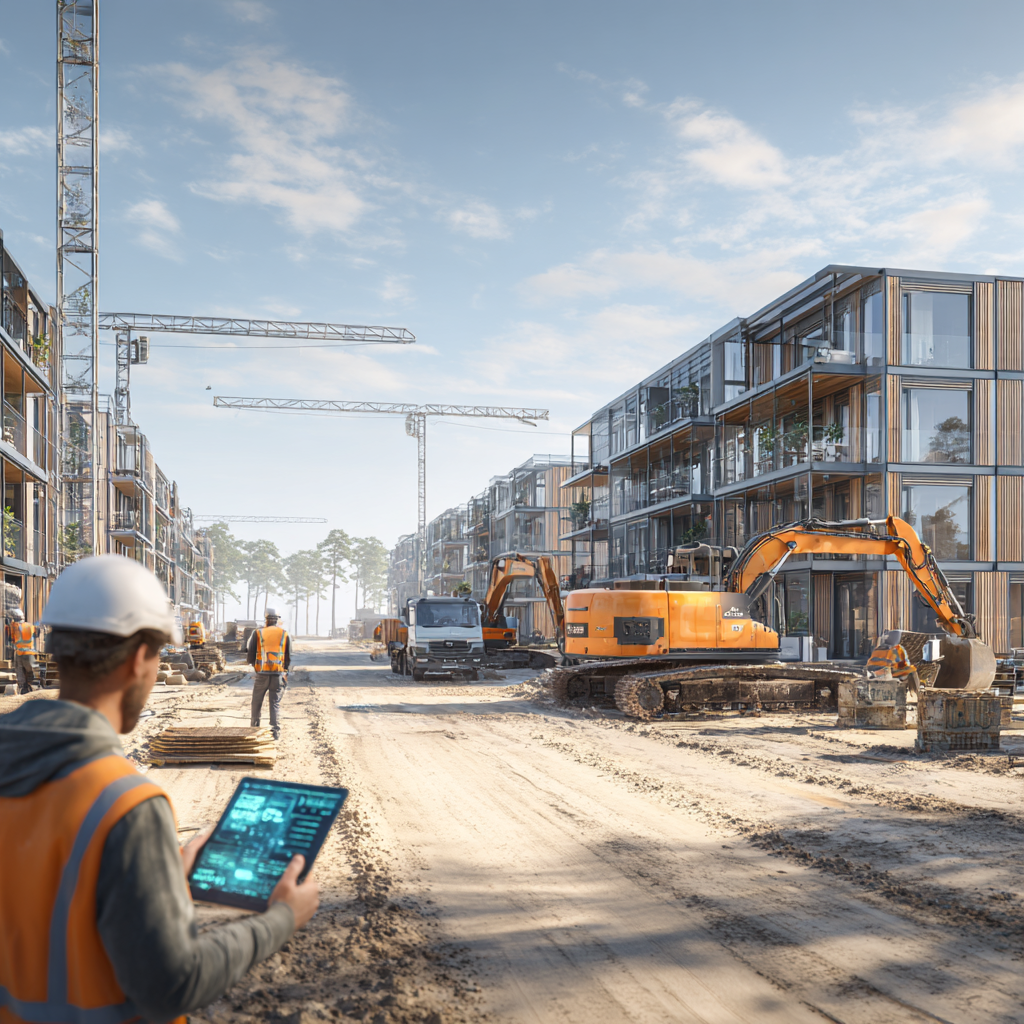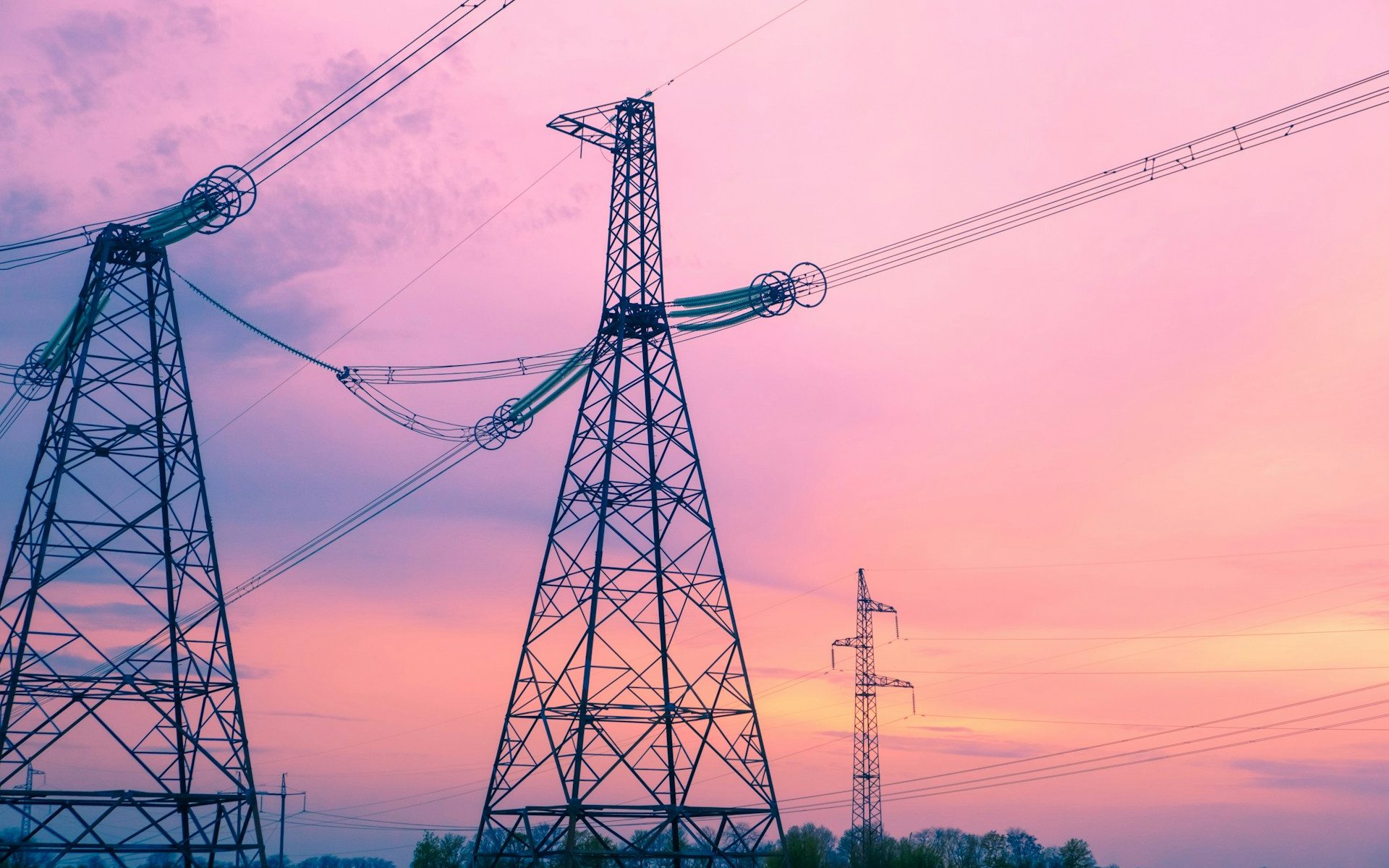De bouwsector is volop in transitie. Waar vroeger dieselmotoren het werk deden, is vandaag de dag elektriciteit de drijvende kracht achter de moderne bouwplaats. Elektrische graafmachines, kranen, pompen en vrachtwagens worden steeds gebruikelijker, en dat is goed nieuws voor de uitstootreductie.
Toch brengt die elektrificatie een grote uitdaging met zich mee: energievoorziening.
Zonder inzicht in het totale stroomverbruik en de momenten van piekbelasting lopen aannemers het risico op stilstand, vertragingen of overschrijdingen van hun energiecapaciteit.
Daarom wordt energieplanning bouwprojecten steeds belangrijker.
In dit artikel lees je wat energieplanning precies inhoudt, waarom het essentieel is voor emissievrije bouwplaatsen, en hoe tools zoals Build for Zero bouwprojecten toekomstbestendig maken – technisch én financieel.
Wat is energieplanning?
Energieplanning is het proces waarbij het energieverbruik van een bouwproject wordt berekend, geoptimaliseerd en gemonitord.
Het doel is eenvoudig: zorgen dat er altijd voldoende energie beschikbaar is voor machines, laadinfra en tijdelijke voorzieningen – zonder verspilling of overbelasting.
Maar in de praktijk is het een complex proces. Elk bouwproject is uniek:
- de locatie (stedelijk, landelijk, Natura 2000-gebied),
- het type werk (grondverzet, utiliteitsbouw, civiele techniek),
- de duur en het materieelgebruik, spelen allemaal een rol in het uiteindelijke energieprofiel.
Zonder inzicht in die variabelen blijft energieplanning bouwprojecten vaak giswerk.
Build for Zero maakt dat inzicht concreet door het verbruik per fase te simuleren en realistische scenario’s te berekenen.

Waarom energieplanning cruciaal is voor de toekomst van de bouw
- De bouw elektrificeert sneller dan verwacht
In 2020 waren elektrische bouwmachines nog een zeldzaamheid. Inmiddels zijn ze op steeds meer projecten de norm.
Een moderne elektrische graafmachine verbruikt bijvoorbeeld 80–100 kWh per dag, terwijl een grote torenkraan op zijn piek soms wel 130–150 kW vraagt. Zonder energieplanning is het lastig om dat verbruik efficiënt te verdelen of op te vangen. Daarom gaan bouwbedrijven vaak uit van een flinke overcapaciteit.
- Netcongestie beperkt de capaciteit
Door de overbelasting van het elektriciteitsnet krijgen bouwplaatsen niet altijd de aansluiting die ze nodig hebben.
Een project dat 200 kVA vraagt, krijgt soms slechts 80 kVA toegewezen.
Met energieplanning kun je vooraf bepalen hoe je met die beperking omgaat – bijvoorbeeld door een batterij te gebruiken of extern te laden.
- Regelgeving dwingt tot emissievrij bouwen
Vanaf 2030 moeten vrijwel alle binnenstedelijke bouwprojecten emissieloos worden uitgevoerd.
Gemeenten vragen nu al om energieplannen of emissierapportages in aanbestedingen.
Wie daar niet op voorbereid is, loopt projecten mis.
- Kostenbeheersing en voorspelbaarheid
Energieplanning zorgt voor stabielere kosten.
Door pieken te voorspellen en te beperken, voorkom je onnodige huur van noodaggregaten of dure laadinfrastructuur.
De kern van energieplanning: inzicht, simulatie en optimalisatie
Energieplanning draait om drie pijlers: inzicht, simulatie en optimalisatie.
- Inzicht
Breng eerst de huidige en verwachte energiebehoefte in kaart. Welke machines, kranen en laadpunten gebruik je, en wat vragen die op piekmomenten? - Simulatie
Gebruik software om scenario’s door te rekenen. Hoe verandert het energieverbruik als je één batterij toevoegt? Wat gebeurt er bij slecht weer, of als er meerdere machines tegelijk draaien? - Optimalisatie
Combineer energiebronnen slim. In sommige gevallen is een kleine netaansluiting met een batterij goedkoper en duurzamer dan een zware aansluiting die zelden vol wordt benut.
- Inzicht
Build for Zero ondersteunt deze drie stappen, waardoor aannemers niet meer afhankelijk zijn van schattingen, maar kunnen werken met datagedreven beslissingen.
Hoe Build for Zero energieplanning vereenvoudigt
Hoe energieplanning bouwplaatsen ook anders kan? Waar traditionele planningen vaak spreadsheets gebruiken, maakt Build for Zero gebruik van een modelmatige benadering.
De software analyseert het energieverbruik op basis van ingevoerd materieel, projectduur en werktijden.
Stap 1 – Materieel invoeren
De gebruiker selecteert het materieel dat op de bouwplaats zal worden ingezet.
De tool bevat data over verbruikscurves van veelgebruikte elektrische machines – van minigravers tot torenkranen.
Stap 2 – Simulatie draaien
De software berekent automatisch de verwachte energiebehoefte per dag, week en projectfase.
Zo krijg je inzicht in:
- baseload (continue verbruikers zoals verlichting of pompen),
- piekbelasting (momenten waarop meerdere machines tegelijk actief zijn),
- totale energiebehoefte over de projectduur.
Stap 3 – Energievoorziening toevoegen
Voeg energiebronnen toe, zoals:
- een tijdelijke netaansluiting (bijv. 100 kVA)
- batterijcontainers
- zonnepanelen
- mobiele laadunits
- externe laadvoorzieningen
De tool laat vervolgens zien welk scenario het meest efficiënt en emissievrij is.
Stap 4 – Rapportage genereren
Het resultaat is een bouwplaats-energieplan met:
- berekende stroomvraag,
- CO₂-besparing,
- emissiereductie per fase,
- aanbevelingen voor optimalisatie.
Deze rapportages kunnen direct gedeeld worden met opdrachtgevers of gemeenten, ideaal voor aanbestedingen met emissiecriteria.
De technische kant van energieplanning
Energieplanning is niet alleen logistiek, maar ook technisch.
Een goed plan houdt rekening met parameters zoals:
- Maximale piekbelasting (kW)
Bepaalt of de netaansluiting voldoende is of dat piekafvlakking nodig is. - Dagelijkse energiebehoefte (kWh)
Helpt bij het dimensioneren van batterijopslag en zonnepanelen. - Laadstrategieën
Slim laden (load balancing) op locatie of juist laden buiten de bouwplaats? - Vermogensfactor en efficiëntie
Houd rekening met vermogensverliezen bij omzetting of transport van energie. - Seizoensinvloeden
Winterprojecten hebben hogere energiepieken (verwarming, verlichting) dan zomerprojecten.
- Maximale piekbelasting (kW)
Build for Zero verwerkt deze parameters automatisch in de simulatie, waardoor aannemers direct realistische inzichten krijgen zonder diepgaande energietechnische kennis.
De rol van energieplanning bij aanbestedingen
Gemeenten en opdrachtgevers nemen energieplanning steeds vaker op als beoordelingscriterium.
Een goed energieplan kan punten opleveren binnen de EMVI-criteria (Economisch Meest Voordelige Inschrijving).
Door een Build for Zero-rapport bij te voegen, laat je als aannemer zien:
- dat je de emissievrije ambitie serieus neemt;
- dat je risico’s vooraf hebt afgedekt;
- en dat je bijdraagt aan beleidsdoelen van de opdrachtgever.
Dat maakt energieplanning niet alleen nuttig, maar ook een must.
Energieplanning als middel voor samenwerking
Energieplanning stopt niet bij de bouwplaatsgrens.
In de toekomst zal samenwerking tussen aannemers, gemeenten, netbeheerders en energiebedrijven essentieel zijn.
Denk aan:
- gedeelde bouwstroomaansluitingen bij grootschalige gebiedsontwikkeling;
- energiehubs waar meerdere partijen gebruikmaken van één batterijopslag;
- afstemming met netbeheerders over planning en piekverdeling.
Build for Zero kan deze samenwerking ondersteunen door uniforme data en scenario’s te delen tussen partijen.
Zo spreken alle betrokkenen dezelfde “energie taal”.
De toekomst: realtime energiebeheer
De volgende stap is monitoring in real time.
In de nieuwe module van Build for Zero kunnen aannemers straks het werkelijke energieverbruik volgen en vergelijken met de simulatie.
Dat biedt voordelen zoals:
- bijsturen tijdens uitvoering;
- automatische rapportages voor CO₂-prestatieladder;
- inzicht in waar energieverspilling optreedt;
- leren van eerdere projecten om volgende plannen te verbeteren.
De combinatie van simulatie en monitoring maakt energieplanning niet alleen nuttig, maar ook zelflerend.
Elke bouwplaats wordt slimmer naarmate er meer data beschikbaar komt.
Conclusie – energieplanning als fundament van emissievrij bouwen
Energieplanning is niet langer een extra stap, maar een voorwaarde voor toekomstbestendige bouwprojecten.
Het helpt aannemers om slimmer met energie om te gaan, emissies te verlagen en risico’s te beperken.
Met Build for Zero wordt dat proces eenvoudig, datagedreven en betrouwbaar.
Of je nu werkt aan een binnenstedelijke bouwplaats of een groot infraproject, met energieplanning heb je controle over de meest cruciale bouwstof van deze tijd: stroom.



